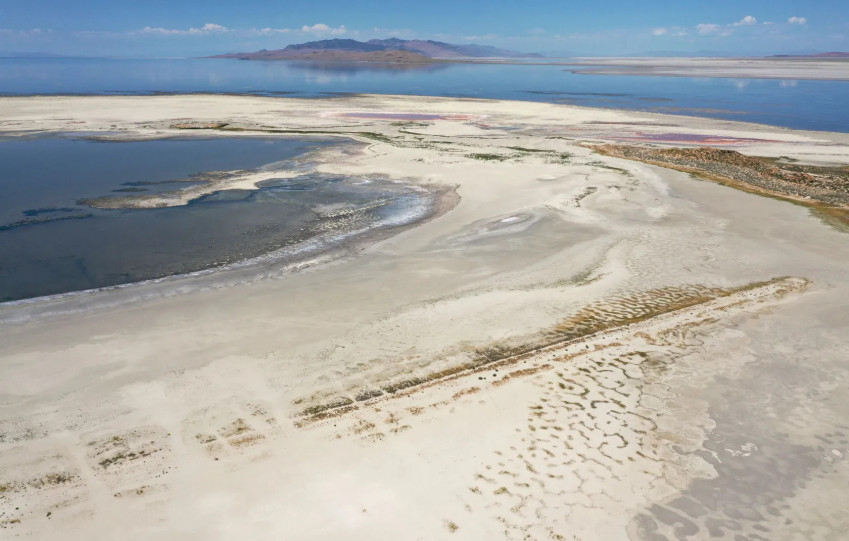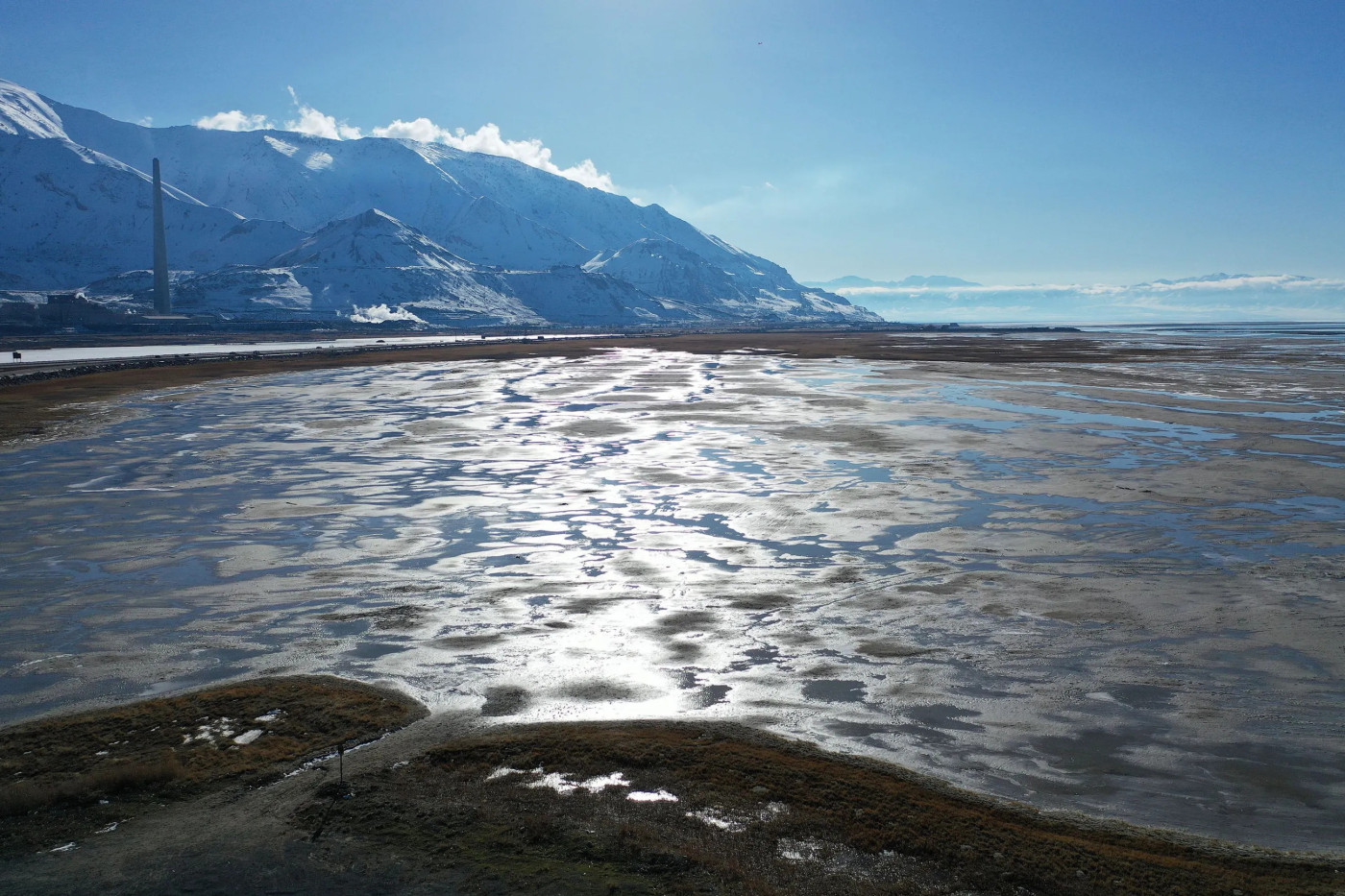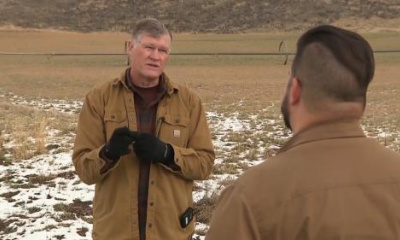Even in ‘wet’ years, conservation, policy changes are paramount to restore the lake
Life as usual cannot go on in northern Utah if the state wants to replenish the Great Salt Lake to an ideal elevation of water to keep it from the same dry destiny of so many saline lakes in the West and the world.
That means some painful water cuts, gobs of new money aimed at boosting water savings and refilling the lake, and tough choices that will have to be made by households, farmers, industry, policy makers and the state Legislature.
All is not lost, a science based assessment concluded in a new report Wednesday. But a pragmatic analysis by a group of experts dubbed the Great Salt Lake Strike Team — made up of the Kem C. Gardener Institute of Policy, the University of Utah, Utah State University and the three state agencies of environmental quality, natural resources and agriculture — says action, however tectonic, is paramount.
“Declining water levels of Great Salt Lake threaten economic activity, local public health, and ecosystems. The situation requires urgent action. Fortunately, science provides crucial perspective, understanding, and scenarios for policymakers to chart a path forward. Many policy levers can help return the lake to healthy levels,” the report’s executive summary said.
The report is described as a “synthesized resource document” for this year’s legislative session containing data, insights and policy options to help devise strategies, improve water management and ultimately increase deliveries to the Great Salt Lake.
The report details six specific recommendations for gubernatorial and legislative support in the coming year:
- Leverage the wet years.
- Set a lake elevation range goal.
- Invest in conservation.
- Invest in water monitoring and modeling.
- Develop a holistic water management plan.
- Request an in-depth analysis of policy options.
That second recommendation, setting a target elevation goal, hit a setback when a resolution proposing just that in the Senate natural resources committee was held because dubious lawmakers worried it would prioritize that elevation at all costs and leave other waterways wanting.
SCR6, sponsored by Sen. Nate Blouin, D-Salt Lake City, failed to advance with House Speaker Brad Wilson, R-Kaysville, later explaining there are other concrete steps to raise the lake other than a resolution that would raise alarm among users.

Record-low water levels are seen in the Great Salt Lake from Antelope Island on July 22, 2022. Kristin Murphy, Deseret News
Challenged levels
According to the Strike Team report, the lake’s contemporary high elevation in 1987 compared to when it first dropped to historic lows in 2022 is a difference of 20.3 feet — a lot of water.
In the interim, the mean temperature since 1983 has increased by 3 degrees in northern Utah, which means the lake’s water evaporates more quickly, its tributaries are less full and depletion demand is up.
Researchers broke down the water usage of the Great Salt Lake at between 67% and 73% due to humans, 15% to 23% lost to natural variability, and anywhere from 8% to 11% lost to a warming climate.
“Policy must focus on human water use as it is the only component that can be changed in the near term,” the report said.
Controversy to come?
But managing human use of water that used to flow to the Great Salt Lake is controversial, affecting millions of users along the Wasatch Front, and like a marionette controlling a puppet, each “string” that is manipulated has inherent, consequential life changes.
Human use includes agriculture, which takes up the bulk of depletions, municipal and industrial consumption, as well as extraction industries that operate adjacent to the Great Salt Lake.
The report mapped out varying scenarios for cuts, including one in which all three categories of users each share an equal amount of pain by reductions of 17.5%, or if agriculture takes the brunt, it would incur a 42% reduction while other human uses would each take 20%.
The potential pain and challenges are far from over given what the future entails.
As far as municipal and industrial use goes, the state is projected to grow by 2.2 million people by 2060, bringing potential new depletions of 80,000 acre-feet. An acre foot of water is enough to cover a football field by one foot, or enough to supply two households for one year.
The report said mineral extraction industries are impacting levels at the Great Salt Lake in a delicate dance that partners depletion with safeguarding the economy. Compromising those industries jeopardizes a $1.1 billion industry and the production of three key Utah minerals, including magnesium, of which the state is North America’s No. 1 producer due to US Magnesium.
What price is necessary for the Great Salt Lake?
The trade-offs for agriculture, municipal and industrial consumption are potentially huge, with impacts to food security as farm lands are idled, higher water rates are imposed, and changing appearances of cities and towns with smaller lawns, little sod and increased density become a new reality.
While these reductions are stark, the report reminds lawmakers that it would take 100,000 to 700,000 acre-feet of water saved through conservation to increase the lake’s level by 3 feet in five years.
The report also says raising the berm that separates the north arm and the south arm of the Great Salt Lake — a step already approved by the state Legislature and endorsed via executive order by Gov. Spencer Cox — should be a top priority to tackle the egregious salinity levels that are impacting the south arm and threatening to wipe out an entire aquatic ecosystem.
Researchers included the possible scenario of piping water from the Pacific Ocean. It would mean the importation of 500,000 acre-feet of water via a 13.3 inch pipeline that would have to ascend the Sierras via an 800-mile route. Conservatively, it would cost $100 billion and take decades to complete, which the Great Salt Lake doesn’t have.
In its report, authors made clear the publication is not advocating for any policy, but rather is designed to serve as guidance.
“This policy assessment provides a first step. As responsible stewards we have many more steps to take,” it said.








